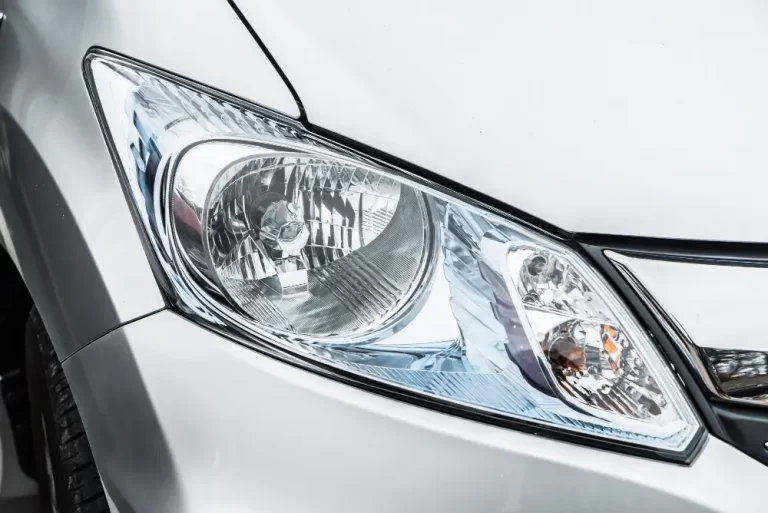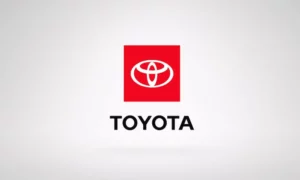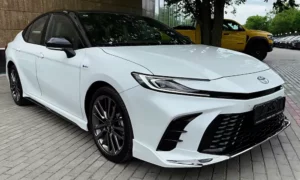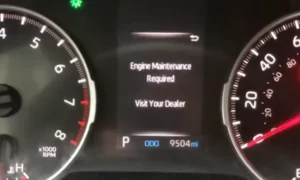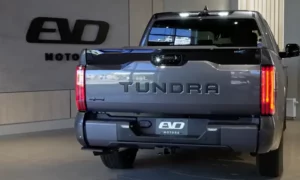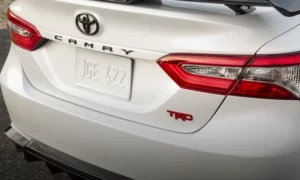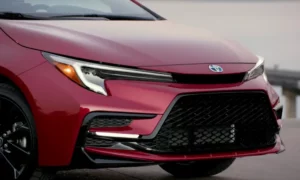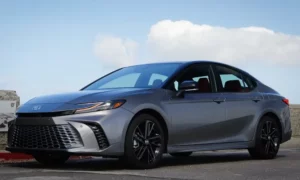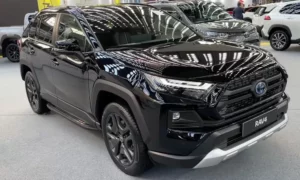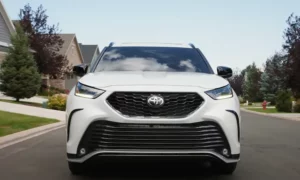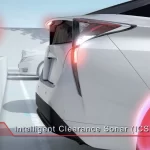You’re driving your Toyota when suddenly that dreaded “Headlight System Malfunction” warning appears on your dashboard. The strange part? Your headlights are working perfectly fine. This disconnect between the warning and reality leaves many Toyota owners confused and concerned about potential repair costs.
What Exactly Is a Toyota Headlight System Malfunction?
A headlight system malfunction warning in Toyota vehicles indicates a problem with the advanced lighting system rather than a simple burned-out bulb. Modern Toyota headlights contain sophisticated electronic control units (ECUs) that communicate with your vehicle’s main computer through a complex network.
When this communication breaks down, your dashboard displays the warning even while your headlights continue functioning normally. Think of it as your car’s nervous system detecting something’s wrong with the “brain” controlling your headlights, not the lights themselves.
Common Causes of Toyota Headlight System Malfunction
Aftermarket Headlight Installation
Installing non-Toyota (aftermarket) headlights is the most frequent trigger for this warning. Here’s why:
- Factory Toyota headlights contain proprietary communication protocols
- Aftermarket headlights lack these specific communication capabilities
- Your vehicle’s computer detects this “foreign language” as a malfunction
Many owners install aftermarket headlights to save money, not realizing they’ll be stuck with a permanent warning light. The communication mismatch simply can’t be fixed without specialized equipment.
Faulty Headlight Leveling System
Toyota’s automatic headlight leveling system adjusts your beam angle based on vehicle load to prevent blinding oncoming drivers. This system includes:
- Height sensors on the rear suspension
- Leveling motors in the headlight assemblies
- A dedicated control module
When any component fails, you’ll see the malfunction warning. Common problems include:
| Component | Failure Symptoms | Typical Repair Cost |
|---|---|---|
| Height Sensor | Headlights aim too high/low | $150-300 |
| Leveling Motor | Headlights stuck in position | $200-500 |
| Control Module | System completely non-functional | $300-800 |
The rear height sensor is especially prone to failure since it’s exposed to road debris and weather.
Water Intrusion and Moisture Damage
Water is the enemy of electronics, and your headlight assemblies are no exception. Moisture can enter through:
- Cracked headlight housings
- Deteriorated seals around the assembly edges
- Poor ventilation causing condensation buildup
Even minor water intrusion creates resistance changes in the electrical circuits that your vehicle’s computer detects as abnormal. The resulting corrosion gradually worsens until the system triggers a malfunction warning.
You might notice fogging or water droplets inside your headlight before or after the warning appears. This is a clear sign that moisture is causing your problem.
Understanding the Diagnostic Codes
When your Toyota displays a headlight malfunction warning, the onboard computer stores specific trouble codes that identify which side is affected:
- B2430: Left headlight malfunction
- B2431: Right headlight malfunction
These codes specifically point to LED headlight circuit issues or communication failures between the headlight assembly and your vehicle’s main computer.
Having these codes read with a diagnostic scanner can help pinpoint which side is affected and sometimes provide additional information about the exact nature of the problem.
Lesser-Known Causes Worth Checking
Camera and Sensor Obstructions
Many modern Toyotas use a forward-facing camera (typically mounted near your rearview mirror) to control adaptive lighting features. If this camera becomes blocked by dirt, snow, or debris, it can trigger the malfunction warning.
Check the area around your rearview mirror base for any camera lenses and make sure they’re clean and unobstructed.
Physical Damage You Might Miss
Sometimes the headlight assembly damage isn’t obvious but still affects system function:
- Hairline cracks in the housing
- Broken mounting brackets causing misalignment
- Impact damage from minor accidents
- Loose connectors from road vibration
Even if your headlights appear intact, physical damage to these components can disrupt the sensitive electronics inside.
Battery and Electrical System Issues
A surprising number of headlight system malfunctions stem from your vehicle’s overall electrical health:
- A weak or dying battery provides insufficient voltage
- Corroded battery terminals create resistance in the electrical system
- Damaged wiring harnesses cause intermittent connections
- Failed relays or blown fuses interrupt power flow
Before diving into expensive headlight repairs, have your entire electrical system checked. Sometimes a simple battery replacement resolves multiple warning lights at once.
What Does Repair Actually Cost?
OEM Headlight Replacement
The most definitive (and expensive) solution is replacing the affected headlight assembly with a genuine Toyota part. Be prepared for sticker shock:
- Factory headlight assemblies cost between $1,000-$3,000 each
- Labor adds another $100-400 per side
- Premium Toyota models (Lexus, Land Cruiser) can exceed $3,500 per headlight
These prices explain why many owners seek alternatives, especially when the malfunction affects both sides. A complete OEM replacement can easily reach $6,000.
Addressing Moisture Issues
If water intrusion is your problem, you have more affordable options:
- DIY moisture removal: Use a hairdryer on low heat to evaporate visible moisture, then place desiccant packs inside the housing. This temporary fix costs under $20 but likely won’t resolve the warning.
- Professional headlight sealing: A body shop can disassemble, dry, and reseal your headlight assemblies for $150-300 per side.
- Partial assembly replacement: In some cases, only the damaged component (lens, housing, or seal) needs replacement, costing $250-700 depending on your model.
The Toyota service center recommends professional sealing for persistent moisture issues rather than DIY fixes that might void warranties.
Sensor and Control Module Repairs
For leveling system problems:
- Height sensor replacement: $150-300 including labor
- Control module repair/replacement: $300-800 depending on model
- Wiring harness repair: $200-400 if connections are damaged
These repairs are more affordable than complete headlight replacement but still require diagnostic time to pinpoint the exact failure point.
Preventing Future Headlight System Malfunctions
While some issues are unavoidable, you can reduce your risk with these practices:
- Stick with OEM parts: Despite the higher cost, genuine Toyota headlight assemblies eliminate compatibility problems.
- Regular inspections: Check headlight assemblies for cracks, moisture, or loose connections during routine maintenance.
- Address small problems early: Small cracks or seal deterioration are much cheaper to fix before water damages the internal electronics.
- Protect from extreme conditions: Park in covered areas during severe weather when possible, and clear snow/ice from headlight areas carefully.
- Maintain your battery: A healthy electrical system prevents voltage-related malfunctions that mimic headlight system problems.
Making an Informed Decision
If you’re facing a headlight system malfunction, consider these factors before deciding on repairs:
- Safety impact: The warning typically doesn’t affect basic headlight function, but it might indicate problems with adaptive features that enhance nighttime visibility.
- Vehicle value: For newer or higher-end Toyotas, fixing the issue maintains resale value. For older vehicles, the repair cost might exceed the value improvement.
- Longevity plans: If you’re keeping your Toyota long-term, proper repairs prevent cascading electrical problems. If selling soon, more affordable temporary fixes might make sense.
- Diagnostic certainty: Get a complete diagnosis with specific codes before authorizing expensive repairs. What seems like a headlight issue might actually be a simple sensor or battery problem.
The Toyota headlight system malfunction warning represents the growing pains of increasingly sophisticated automotive technology. While frustrating, understanding the underlying causes helps you make smarter repair decisions and potentially avoid costly fixes for what might be a relatively minor issue.

